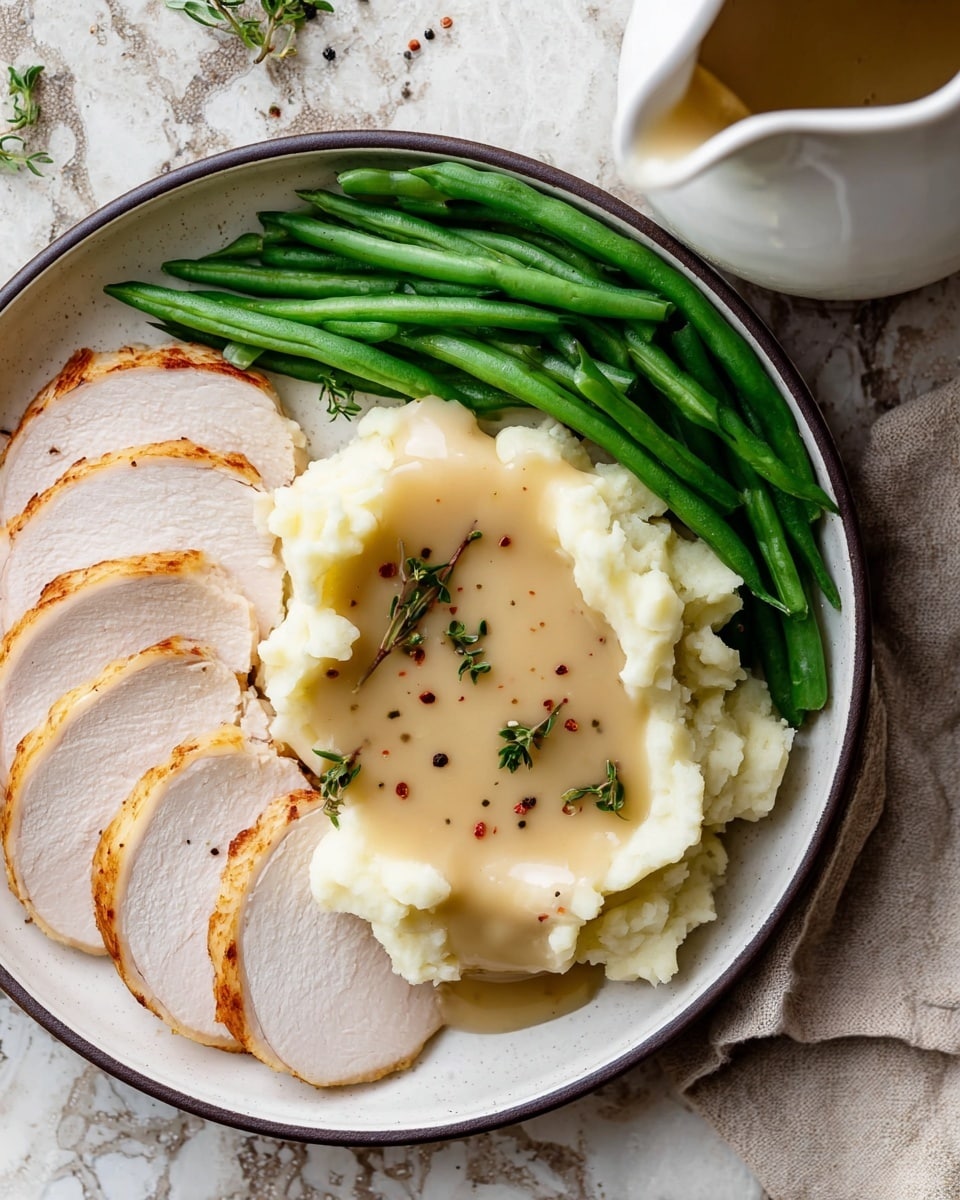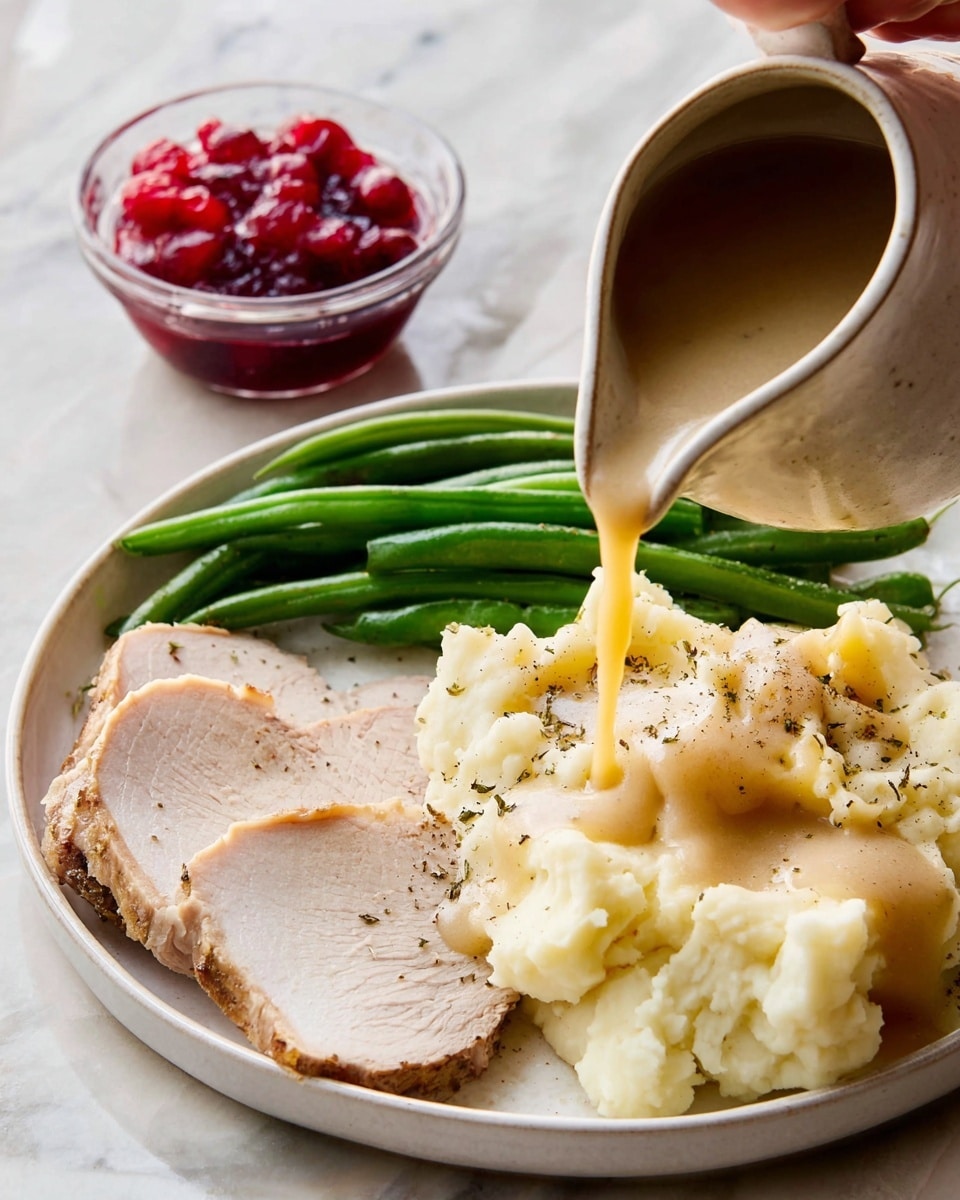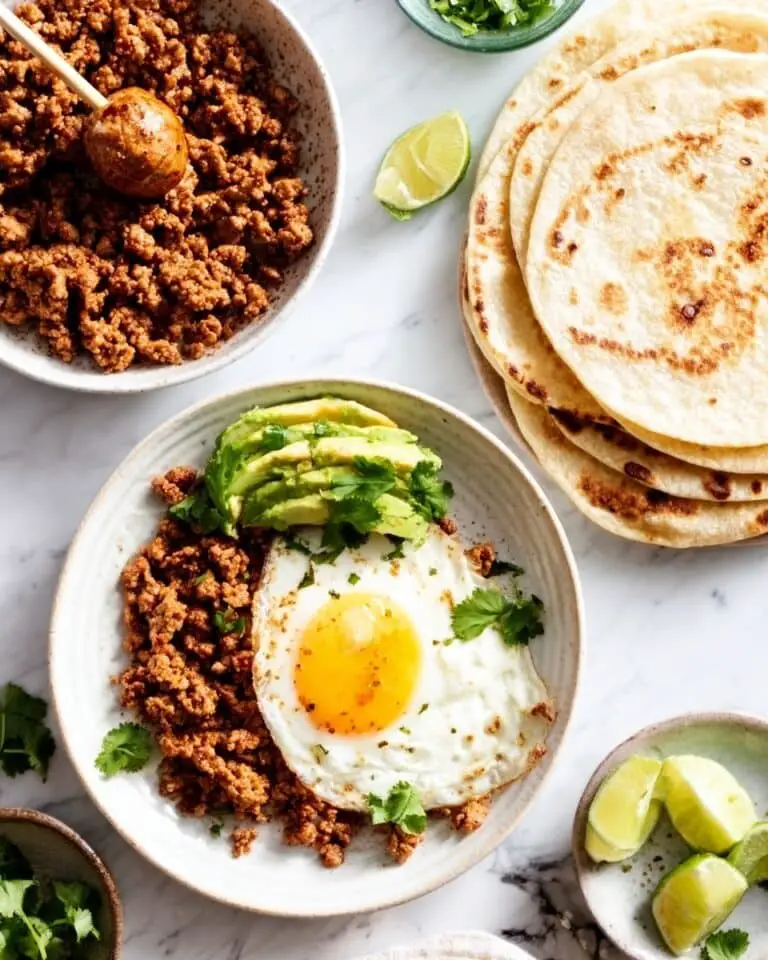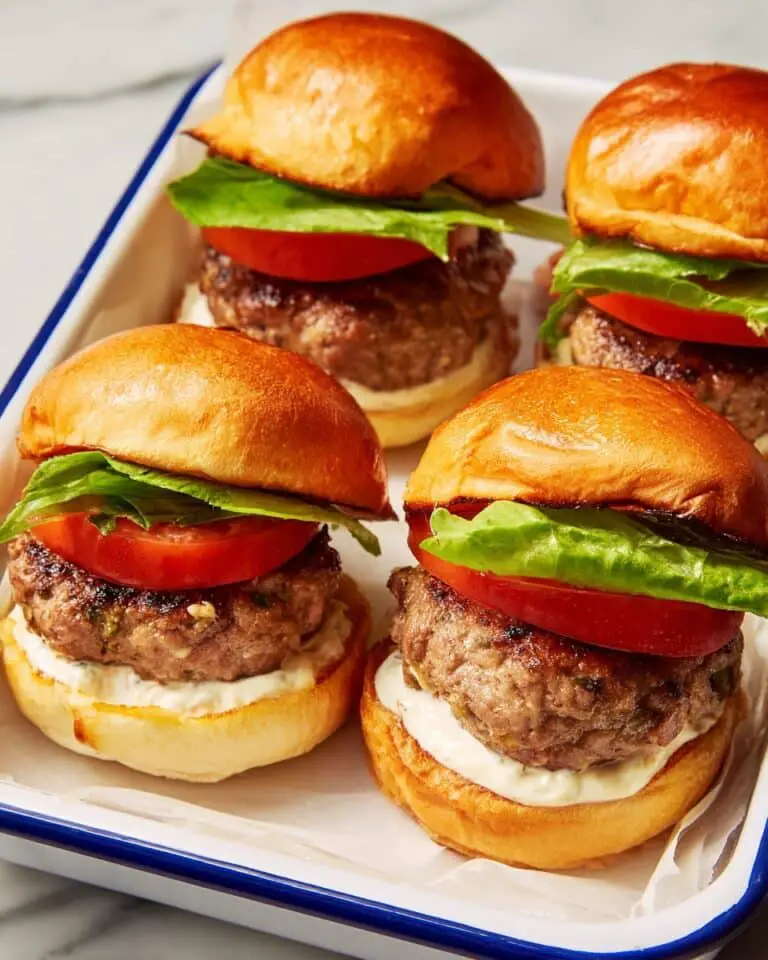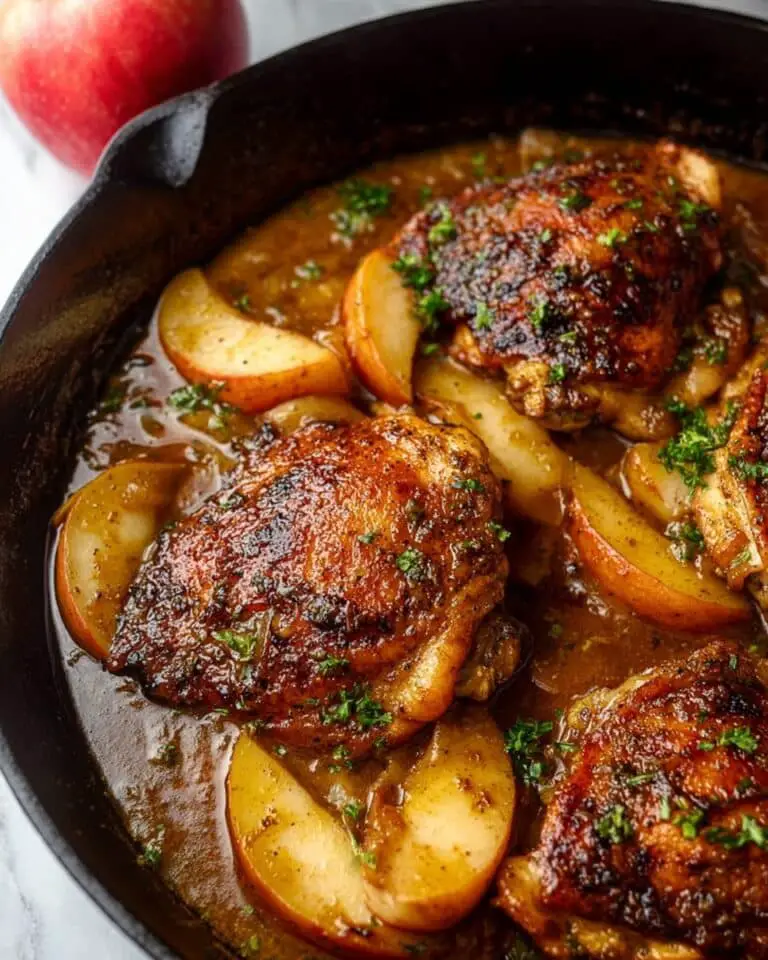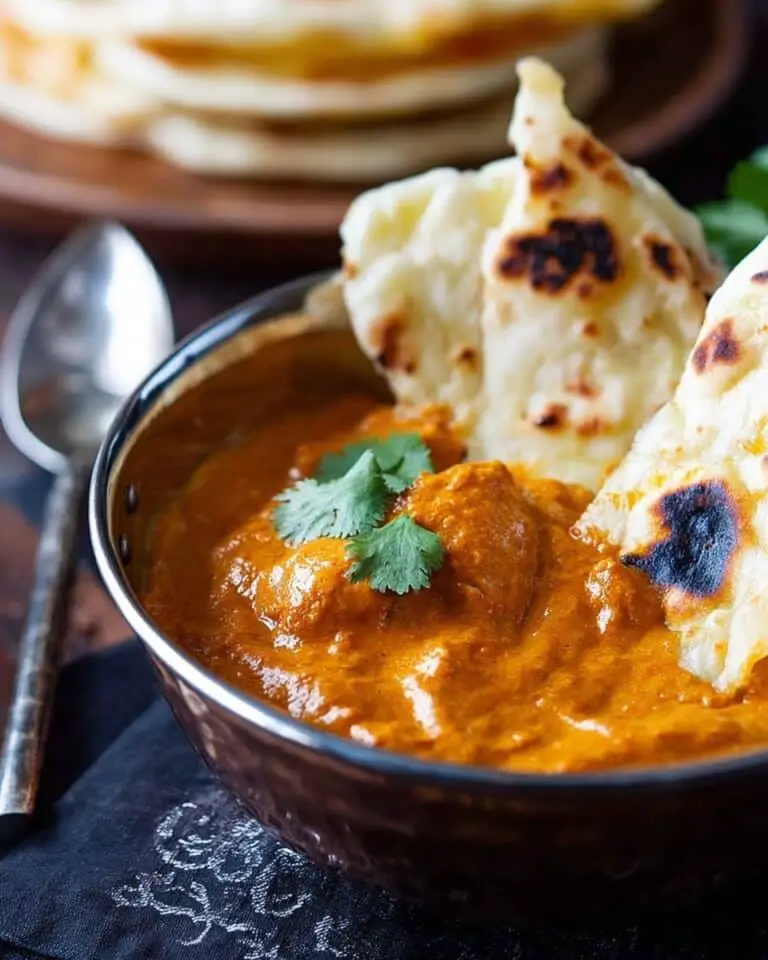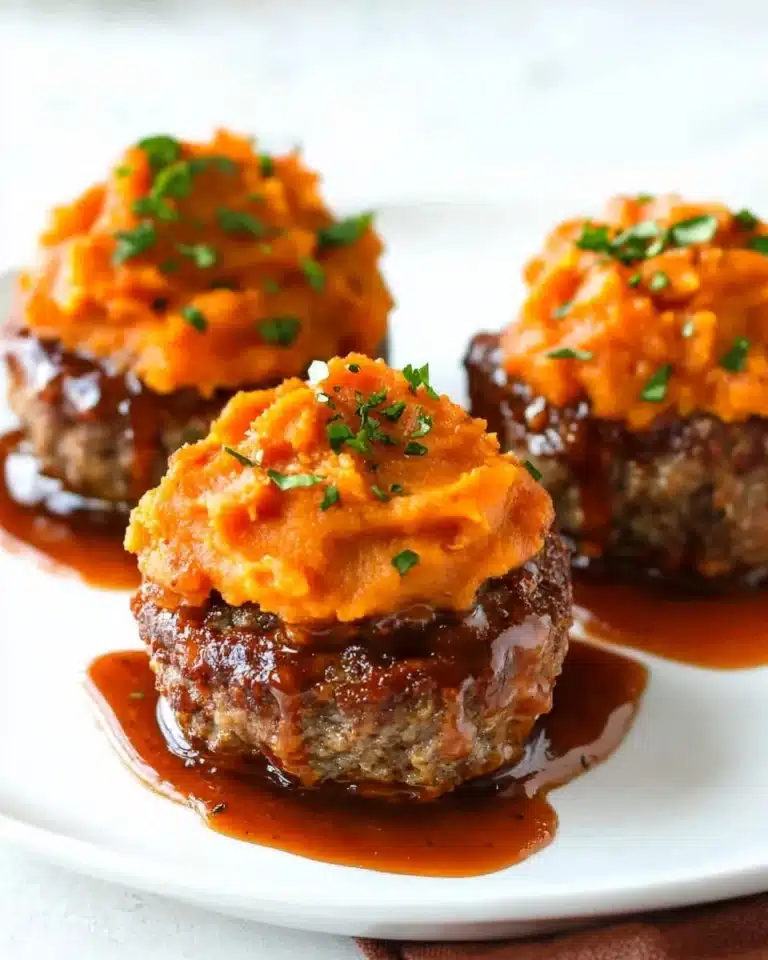If you’ve ever roasted a turkey and found yourself staring at that golden pool of drippings wondering how to turn it into something magical, I’m about to share a game-changer with you! The Turkey Giblet Gravy from Roasted Turkey Drippings Recipe is hands-down one of my favorite ways to elevate any holiday meal or Sunday dinner. It’s rich, super flavorful, and has just the right touch of savory goodness that only those giblets can bring to the table. Stick with me here—I promise this recipe will become your go-to for making the most of every last bit of that roasted turkey.
Why You’ll Love This Recipe
- Maximizes Flavor: Using turkey drippings and giblets gives this gravy a rich, savory depth you just can’t get from store-bought mixes.
- Simple Technique: Despite sounding fancy, this gravy comes together quickly with just a few straightforward steps and ingredients.
- Flexible Consistency: You’ll learn how to adjust the thickness so it’s just right for your preference every time.
- Perfect for Leftovers: Great for making the day after Thanksgiving or whenever you roast turkey—because who wants to waste those drippings?
Ingredients You’ll Need
These ingredients are pretty straightforward, but each one plays a key role in building that luscious gravy flavor. I like to grab low-sodium chicken broth to control the saltiness, and always keep an eye on those giblets for that meaty punch.
- Turkey drippings: This is the star of the show—make sure to collect all those flavorful bits and fat from the roasting pan.
- All-purpose flour: The secret to thickening your gravy perfectly—no lumps, just silky smoothness.
- Low-sodium chicken broth: Or turkey broth if you have it; keeps the gravy moist and boosts the savory notes.
- Giblets and turkey neck (optional): They add incredible depth—if you’re skeptical, I promise the liver’s flavor mellows once removed from the mix.
- Salt and pepper: Essential for seasoning—adjust these to suit your taste as you go.
- Water: For simmering the giblets until they’re tender and ready to flavor the gravy.
Variations
Once you master the basic Turkey Giblet Gravy from Roasted Turkey Drippings Recipe, I love to tweak it a little to match whatever mood I’m in or dietary needs I’m juggling. Feel free to personalize it—you’ll find lots of room to experiment.
- Herb-infused gravy: I sometimes add a sprig of fresh thyme or sage to the giblet simmering water—it adds such a cozy aroma!
- Vegetarian style: Skip the giblets and turkey drippings, and build flavor with rich vegetable broth and sautéed mushrooms for that earthy vibe.
- Spiced up: A pinch of smoked paprika or cayenne can add a surprising warmth that my family goes crazy for.
- Gluten-free option: Substitute the flour with a gluten-free blend or cornstarch slurry to keep it just as luscious.
How to Make Turkey Giblet Gravy from Roasted Turkey Drippings Recipe
Step 1: Simmer the Giblets and Neck
Start by placing the neck, heart, liver, and gizzards into a medium saucepan. Cover them with water and bring to a boil, then simmer gently for about an hour until the meat is tender and cooked through. I like to use this time to clean up the kitchen or prep other dishes because it takes care of itself. Once done, remove the giblets with a slotted spoon and set them aside. Keep a little of the cooking liquid—you might want it later to thin the gravy if it gets too thick.
Step 2: Prepare the Giblet Meat
After the giblets have cooled enough to handle, discard the liver (I learned this trick early on because the liver can make the gravy taste bitter). Pick any meat off the neck and dice all the giblets into small pieces. This will add amazing texture and rich flavor when stirred into your final gravy.
Step 3: Collect and Skim the Turkey Drippings
Once your turkey is out of the oven, carefully pour the drippings from the roasting pan into a large bowl. I always tell myself to be extra cautious here—the pan is hot, and the last thing you want is a burn. Let the drippings sit for a few minutes so the fat rises to the surface. Use a ladle or spoon to skim off most of the fat, leaving behind the flavorful juices. This step is where a lot of people lose the gravy’s rich taste, so don’t rush it!
Step 4: Create the Roux
In a large saucepan, combine 1 cup of the turkey drippings with 1/2 cup of all-purpose flour. Whisk together over medium heat until you get a smooth, pasty consistency—it’ll look almost like peanut butter. This is your roux, and it’s the base of silky gravy. If it feels too greasy, just add a tad more flour. Keep whisking until it turns a golden brown color, which brings out that nutty flavor I love.
Step 5: Add Broth and Drippings, Then Simmer
Pour in 4 cups of low-sodium chicken broth along with another cup of the reserved turkey drippings. Whisk constantly as the gravy thickens, about 5 to 8 minutes. It’s okay if it looks a bit thinner than you want at first—the magic isn’t done yet. Then stir in the diced giblets from earlier.
Step 6: Adjust Consistency and Season
Now here’s where your judgment really shines. If the gravy is too thick, add some of the giblet cooking liquid or more drippings to loosen it up. Too thin? Let it simmer longer, stirring often to avoid lumps—10 minutes usually does the trick. If it’s still not thick enough, mix 1 tablespoon of cornstarch with 1 tablespoon of water and slowly whisk that into your gravy until it thickens. Finally, season with salt and pepper to taste, and you’re ready to dig in!
Pro Tips for Making Turkey Giblet Gravy from Roasted Turkey Drippings Recipe
- Save That Fat Wisely: Don’t discard all the fat from the drippings; a little bit mixed in gives your gravy that silky texture and depth.
- Roux Patience: Take your time browning the roux—it’s worth it for that rich, caramelized flavor instead of a raw flour taste.
- Use Fresh Broth: Fresh homemade or quality store-bought broth makes a noticeable difference versus water.
- Taste as You Go: Season gradually; it’s easier to add salt and pepper little by little than fix an overly salty gravy.
How to Serve Turkey Giblet Gravy from Roasted Turkey Drippings Recipe
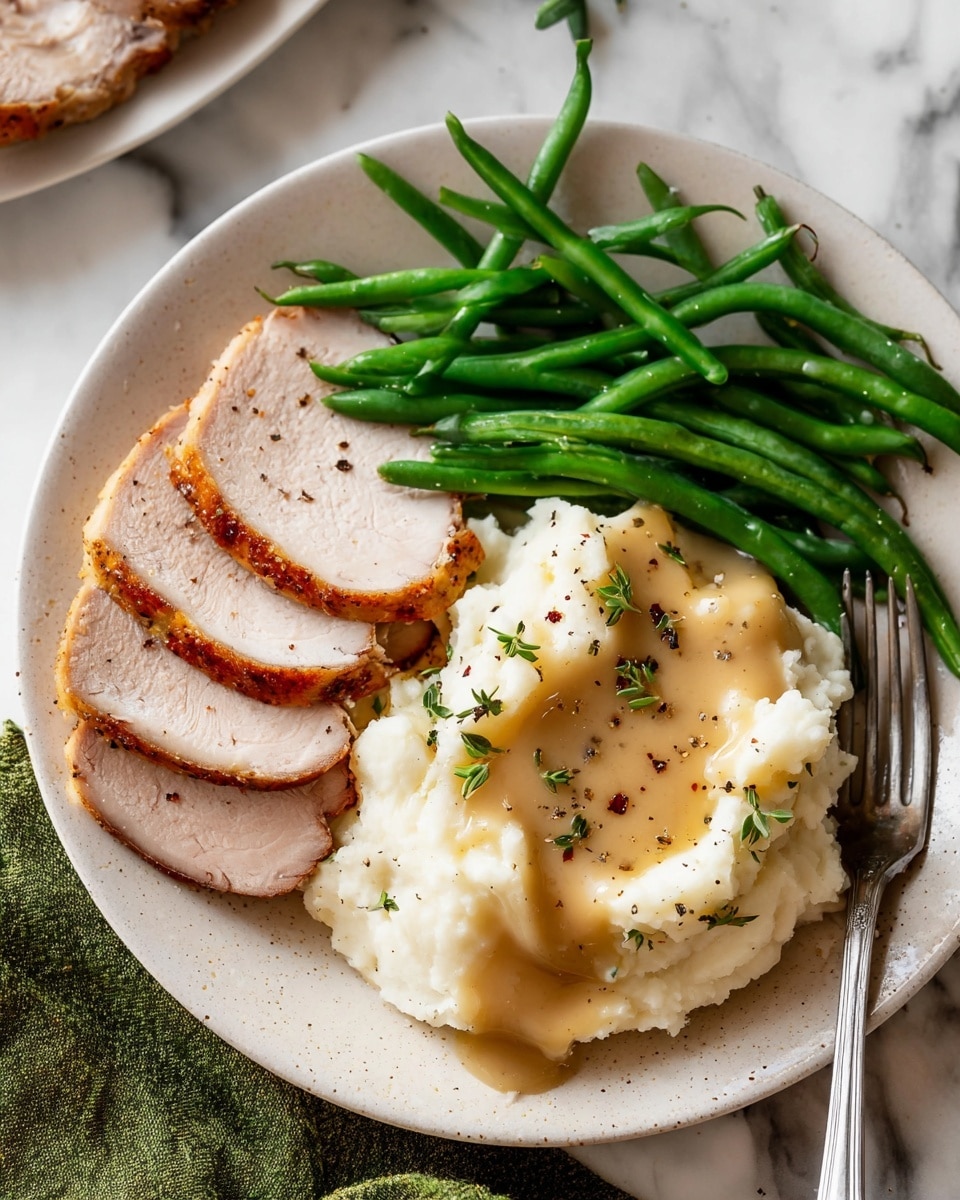
Garnishes
I love garnishing my gravy with a sprinkle of fresh chopped parsley or thyme right before serving—it adds a lovely pop of color and brightens the rich gravy flavor. Sometimes I toss in a few extra diced cooked mushrooms for texture, just because I like that earthiness mingling with the giblets.
Side Dishes
Of course, this gravy pairs beautifully with classic mashed potatoes (I often mash them with roasted garlic), stuffing, roasted vegetables, and even cranberry sauce for that perfect balance of savory and sweet. I like to pour it over thick slices of turkey breast or hearty dark meat—the giblets make dark meat shine even more!
Creative Ways to Present
For special occasions, I’ve ladled this gravy into a pretty gravy boat with fresh herb sprigs tucked around the base, making the whole table look inviting and festive. You could also serve it in small individual ramekins or even as a drizzle over savory pies or casseroles to impress guests.
Make Ahead and Storage
Storing Leftovers
I usually pour any leftover gravy into an airtight container and store it in the fridge for up to 3 days. When you reheat it, whisk it gently over medium-low heat, adding a splash of broth or water if it’s thickened too much.
Freezing
I’ve frozen this gravy successfully, too—just let it cool completely, then pour it into freezer-safe jars or bags. Thaw overnight in the fridge before reheating. Sometimes the texture changes slightly, but a quick whisk and gentle reheating brings it back to life.
Reheating
Reheating works best on the stovetop over low-medium heat. Stir often and add small amounts of broth or water if the gravy thickens too much or starts to stick. Avoid the microwave if you want to keep that velvety texture intact.
FAQs
-
Can I make turkey giblet gravy without the giblets?
Absolutely! While the giblets add an extra layer of flavor and texture that make this recipe stand out, you can skip them altogether. Just use the turkey drippings and broth, and you’ll still get a deeply savory, delicious gravy.
-
What if my gravy is too lumpy?
Lumps usually happen if the flour is added too quickly or isn’t whisked well. To rescue it, try whisking vigorously over low heat or strain the gravy through a fine sieve. Next time, mix flour with fat to make a smooth roux before adding the liquid.
-
Can I use broth other than chicken broth?
Yes! Turkey or vegetable broth works just as well. I like chicken broth for its mild flavor, but if you have homemade turkey broth from roasting, that’s even better for boosting the gravy’s richness.
-
How long can I keep leftover gravy in the fridge?
Stored in an airtight container in the refrigerator, leftover turkey giblet gravy should last for up to 3 days. Be sure to reheat it thoroughly before serving.
-
Is it necessary to discard the liver from the giblets?
I recommend discarding the liver because it can impart a strong, sometimes bitter flavor that not everyone enjoys. The heart, gizzards, and neck meat provide plenty of delicious richness without the liver’s intensity.
Final Thoughts
I absolutely love how this Turkey Giblet Gravy from Roasted Turkey Drippings Recipe turns out every single time—it’s those homemade touches and little tricks that transform simple ingredients into something memorable. When I first tried making gravy this way, I felt a little intimidated by the giblets, but learning to use them properly opened up a whole new world of flavor for me. If you’re roasting turkey anytime soon, give this recipe a whirl. I’m confident you’ll impress your family (and yourself) with a gravy that tastes like it came from a professional kitchen. Trust me, once you try it, you’ll never want to settle for anything less!
Print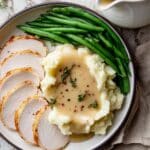
Turkey Giblet Gravy from Roasted Turkey Drippings Recipe
- Prep Time: 10 minutes
- Cook Time: 10 minutes
- Total Time: 20 minutes
- Yield: 15 servings
- Category: Sauce
- Method: Stovetop
- Cuisine: American
Description
This classic Turkey Gravy recipe is made from savory turkey drippings and enriched with tender giblets for a rich, flavorful sauce. Perfect for elevating your roasted turkey, this easy-to-make gravy combines a golden roux with chicken broth and optional giblet meat for a comforting, traditional accompaniment that enhances any holiday or family meal.
Ingredients
Turkey Drippings
- Drippings from roasted turkey (about 2 cups, separated into 1 cup + 1 cup portions)
- Salt and pepper, to taste
Giblets
- Neck, heart, liver, and gizzards from uncooked turkey (optional)
- Water, enough to cover giblets
Gravy Base
- 1/2 cup all-purpose flour
- 4 cups low-sodium chicken broth (or turkey or vegetable broth)
Instructions
- Prepare the Giblets: Place the turkey neck, heart, liver, and gizzards in a medium saucepan. Cover fully with water and bring to a boil. Reduce heat and simmer for 1 hour, until meat is cooked through.
- Remove Giblets: Use a slotted spoon to remove giblets from the broth. Set the giblets aside and reserve some of the broth if you want to adjust the gravy consistency later. Discard liver to avoid strong flavor unless preferred.
- Dice Giblet Meat: When cool, remove meat from turkey neck, discard the bones. Dice all giblet meat into small pieces for adding to the gravy.
- Separate Turkey Drippings: After roasting turkey, pour drippings from the pan into a large bowl. Let it sit for a minute to allow fat to separate and rise to the top. Skim off most of the fat with a spoon, keeping about 1 cup of drippings for the gravy.
- Make Roux: In a large saucepan, combine 1 cup of the turkey drippings with 1/2 cup flour. Whisk together over medium heat until a smooth paste forms and begins to turn golden brown, creating a roux.
- Add Broth and Drippings: Slowly whisk in 4 cups of chicken broth and an additional 1 cup of turkey drippings. Continue whisking to combine thoroughly.
- Simmer and Thicken: Cook the gravy, whisking constantly, for 5 to 8 minutes until it thickens. Add the diced giblet meat and stir to incorporate.
- Adjust Consistency: If the gravy is too thick, add reserved giblet broth or drippings liquid to thin it. If too thin, cook for an additional 10 minutes or add a cornstarch slurry (1 tablespoon cornstarch mixed with 1 tablespoon water) and continue cooking until desired thickness is reached.
- Season and Serve: Taste the gravy and season with salt and pepper as needed. Serve warm with your roasted turkey.
- Storage: Store leftover gravy in a covered container in the refrigerator.
Notes
- The best turkey gravy is made with real turkey drippings to maximize flavor.
- Including giblets adds depth and richness to the gravy, but they are optional.
- Skimming the fat gently from the drippings ensures a smooth, well-balanced gravy.
- Adjusting the consistency with reserved broth or a cornstarch slurry helps achieve your preferred thickness.
- Discarding the liver avoids an overly strong and bitter taste uncommon to many palates.
Nutrition
- Serving Size: 1/4 cup (approximate)
- Calories: 25
- Sugar: 0.2 g
- Sodium: 18 mg
- Fat: 1.2 g
- Saturated Fat: 0.3 g
- Unsaturated Fat: 0.7 g
- Trans Fat: 0 g
- Carbohydrates: 3 g
- Fiber: 0.1 g
- Protein: 1 g
- Cholesterol: 5 mg

